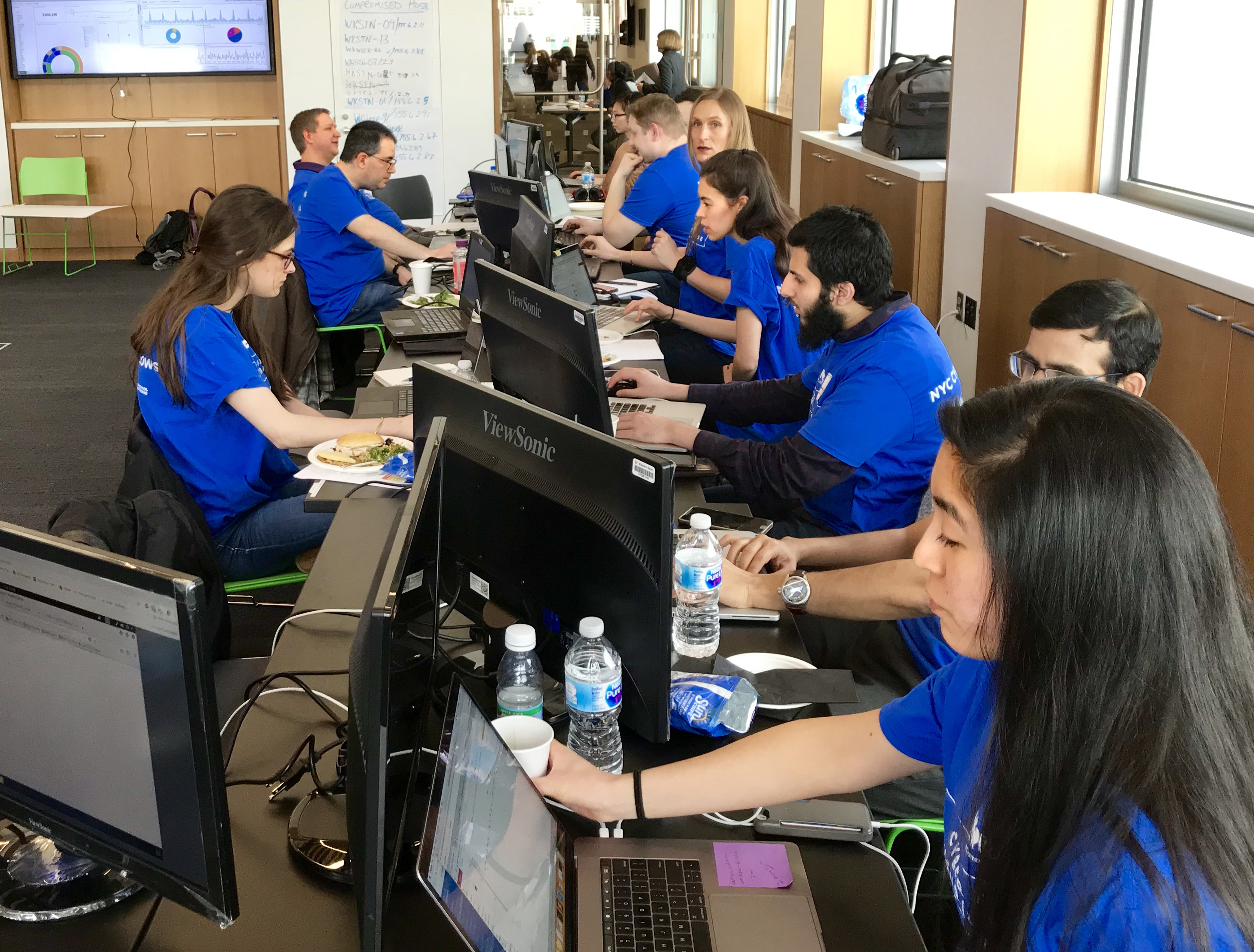City preps for cyber attacks in Downtown Brooklyn
Cybersecurity panel: Is it out of control?

At the city’s first joint simulated cyber war on Tuesday, Blue Team defenders filled a large hall at NYU Tandon in Downtown Brooklyn. Eagle photo by Mary Frost
A large-scale computer network attack took place in Downtown Brooklyn on Tuesday — but it was just a drill.
A little-known agency, New York City Cyber Command, aka NYC3, staged its first-ever joint simulated cyber war.
NYC3 is the center of gravity for the city’s cybersecurity mission, responsible for the government’s enterprise and public safety agencies, as well as for the city’s businesses and residents.
